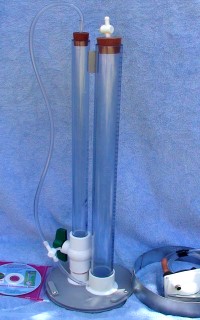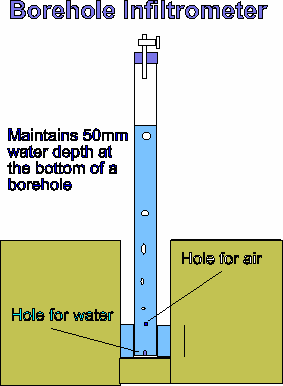|
Which infiltration method to use?
The double ring method was developed to measure infiltration without the loss of water by sideways movement (sorptivity) as happens from a single ring.
After 30 years experience in field measurement of infiltration, Soil Water Solutions has found that :-
a) It is nearly impossible to detect leaks between the inner and outer rings in a double ring system after it is set up. To set them up it is ncessary to first install the centre ring , fill it, test for leaks, then install the outer ring. hence double rings take 4x as long to set up and (as time in the field is usually limited), you can only test a few sites with a small diameter ring.
b) the statistical error for a set of field infiltration measurements is usually proportional to the total soil area tested ie ideally maximise the number of tests and the size of the ring.
e) The purpose of double rings is to minimise the effects of water spreading sideways from the ring. A sideways plume can account for a wet zone of as much as 2cm around the ring. In a small ring (eg 10cm diam) this may be as much water as is infiltrating vertically. ie result appears 50% higher. By using larger rings, the proportion of water lost to sideways movement is dramatically reduced (eg a 2cm sideways plume on a 40cm ring is only 10% of the total)
Moral of the story : use the biggest ring you can manage in single ring configuration and do as many tests as you can in the time available. However, the down side is that you need a lot of water. If you are concerned about sideways water flow, then compare results from tests using a small (eg 20cm dia) ring and a 50cm diam ring - the results should give an indication if the side flow is a significant problem and some guide how to correct for it.
|



